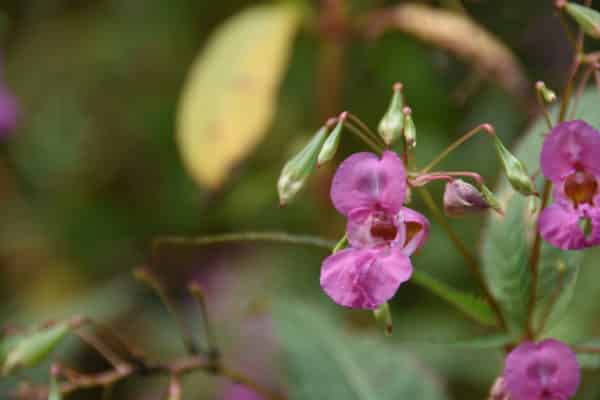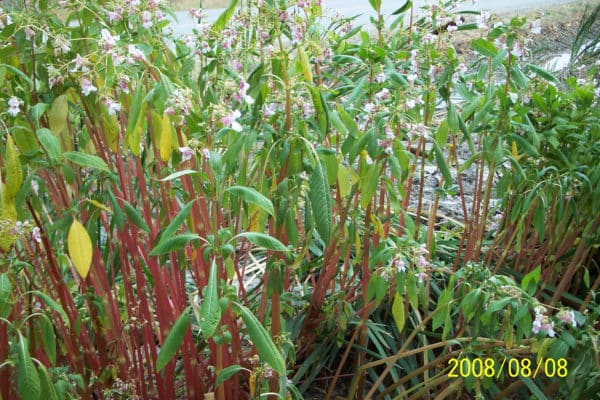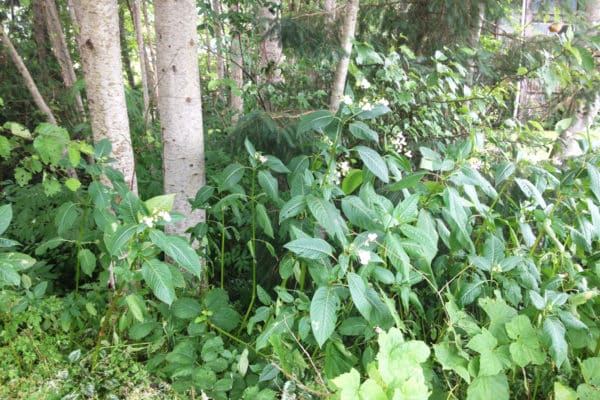Himalayan balsam (Policeman’s helmet)
About This Species
Himalayan balsam (Policeman’s helmet, Ornamental jewelweed, Kiss-me-on-the-mountain) is a plant can take over areas with moist soils, including stream and riverbanks. It is native to the Himlayas in Northern India and is now considered an invasive species in North America, Europe, and New Zealand. It produces a lot of plant nectar which can attract bees and other pollinating insects to Himalayan balsam instead of other naturally occurring plants. This plant has seed pods that when ripe, can explode or shoot seeds up to 7 m from the plant. Himalayan balsam is designated as a Regional Containment/Control species by the BC Provincial Priority Invasive Species List.
How to Identify
Himalayan balsam grows from 0.6-2 m tall and has purplish hollow stems with many branches.
Flowers range in colour from white, pink, and purple. The flowers are hooded in shape which gives it the appearance of traditional English police helmets. Its seeds are large, black and 3-5 mm long.
Leaves are large, sharply toothed and lance shaped. They can grow in whorls of 3 around the stem.
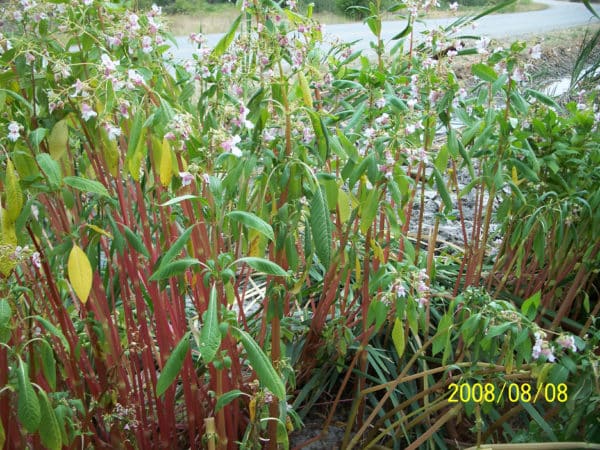
Take Action
Hand pulling or cutting and bagging the plants in flower are effective forms of control. This plant is easily pulled of the ground. It is important to note that this kind of control must be done before seed pods are ready to explode, otherwise the slightest disturbance will cause seeds to shoot out, resulting in more plants the following year.
- Himalayan balsam Factsheet PDF
-
If you need advice about invasive species on your property or you are concerned about reported invasives in your local area, contact your local government or regional invasive species organization.

Plantwise
Learn about best practices
A few non-invasive alternatives to plant instead of Himalayan balsam (Policeman’s helmet) include:
- Beardtongue (Penstemon barbatus)
- Pacific bleeding heart (Dicentra formosa)
- Pink monkey flower (Mimulus lewisii)
- Pink turtle (Chelone lyonii, C. oblique)
- Red columbine (Aquilegia formosa)
REPORT TO PROTECT BC’S BIODIVERSITY
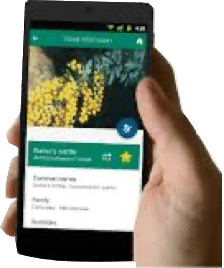
Use the app
Observe and report to protect BC’s biodiversity

Report through this website
Use our form to tell us what you’re seeing and where.



